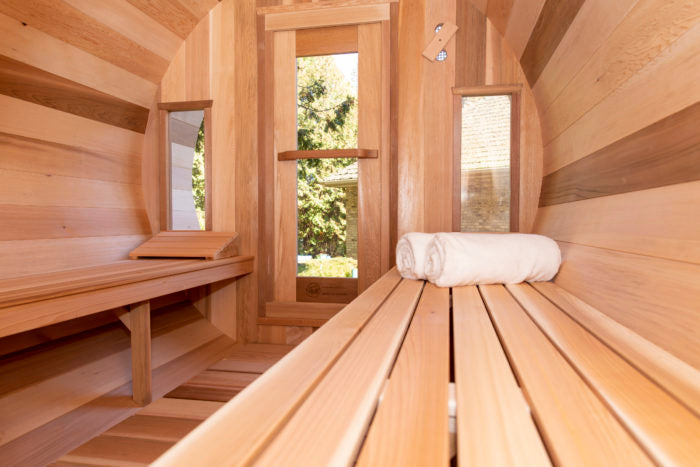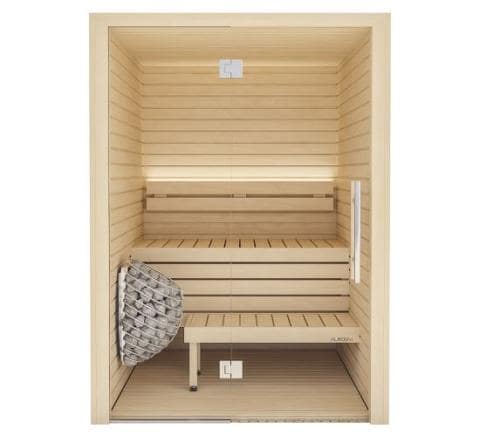The Ultimate Guide To Traditional Sauna
The Ultimate Guide To Traditional Sauna
Blog Article
Traditional Sauna - An Overview
Table of ContentsGetting The Traditional Sauna To WorkFascination About Traditional SaunaThe 6-Second Trick For Traditional SaunaThe 8-Second Trick For Traditional SaunaWhat Does Traditional Sauna Mean?
A lot of the weight lost in a sauna is water loss and is re-gained upon rehydrating. However, undeniably sauna can be a vital part of a healthy fat burning program. To consider the differences between typical and IR saunas, I will certainly divide these right into verifiable, theoretical, and made differences.Hence, the hottest factor in the saunawhich is at the ceiling directly over the sauna heateris generally in between 185 and 190 F. Claims that a conventional sauna goes beyond 200 F is merely not real and not suitable for electrical saunas marketed in the United States. The temperature for a far-infrared sauna is normally established in between 120 and 140 F; nevertheless, unlike the typical sauna, the objective in and IR area is not to attain a heat.

When a typical sauna has been properly warmed, the sauna walls are cozy, the air temperature has actually accomplished set temperature level and the rocks are super warmed. As an intriguing side note, the warmed walls and the rocks are releasing far-infrared heat, incorporated with the heated air, to develop an "covering warmth".
Getting My Traditional Sauna To Work
When the high temperature level is accomplished, the aspects cycle on and off to maintain the high temperature. Most conventional sauna customers delight in putting water over the rocks to develop steam to elevate sauna humidity levels. The advantages of putting water over the rocks consist of: making the area more comfortable, dampening the nasal flows, and permitting the use of aromatherapy by mixing vital oils with the water.

When the power goes into the body, it triggers the body temperature to boost and eventually causes sweating. In an infrared sauna it is essential for the emitters/heaters to continue to be on practically frequently. Given that there is no mass of rocks to preserve warm, the sauna will certainly cool if the emitters turned off.
Some Ideas on Traditional Sauna You Need To Know
As mentioned over, the sauna bather in an infrared room wishes to position himself before operating emitters to get optimal take advantage of the warmth. The heating time for the 2 spaces can be really different, relying on exactly how the areas are utilized. For a typical sauna, a bather must allow 30-40 mins for the room to accomplish a desired temperature and to effectively pre-heat the rocks.

A well created sauna will typically accomplish a temperature level of 150-160 F in concerning 30-40 mins. For hotter temperatures, the space may need to warmth for a longer period.
To some, 15 minutes was "lost" while the infrared power hop over to here heated up the timber panels rather than heating a body, while others find a pre-heated room to be a lot more comfortable and believe an elevated starting temperature is necessary to begin sweating. The size of advised usage for each room is approximately the same (10-15 minutes per session); nevertheless, because of the reduced air temperatures and the ability to feel the impacts of infrared warm quicker than a conventional sauna, it is not unusual for a person to spend a total amount of 20-30 mins in an infrared sauna.
All About Traditional Sauna

The typical expense per kWH of electricity in the united state is about $0.11, so a 4.5 kW heater will set you back approximately $.50 to run for one hour, if the heating system runs continually for one hour. Commonly a sauna heater will compete 75% of the initial hour and 50% of succeeding hours on considering that the components cycle once the set temperature is attained.
A two person far-infrared space is generally literally smaller than a typical sauna, often regarding 4' x 4' or smaller. The IR heater is normally 1.5-1.7 dig this kW utilizing a 120 volt 15 amp plug-in solution. Since the room can be utilized quicker than a sauna space, we will certainly presume the space is used for to of an hour including warm up time.
There is a hardly ever talked about distinction in the social experience in between the two spaces. While our culture has shed a few of the social benefit of the conventional sauna experience, it can be extremely socially gratifying (Traditional Sauna). From household time in the sauna, to heart-felt conversations with loved ones, to sauna partiesthe conventional sauna experience can bring about intimate socializing
Traditional Sauna Things To Know Before You Buy
Many higher end infrared areas include tinted light therapy, audio systems and full-glass fronts.
Report this page